Saltimbocca
Quarta & Armando has designed Saltimbocca in Wuhan, China to incorporate four open kitchens which allowing the restaurant’s diners to be spectators at the very center of the action.
In late 2016, Quarta & Armando was asked by a leading international food and beverage group in Wuhan to design a flagship restaurant serving both hot and cold dishes, coffee and bakery products. After almost two years of development Q&A unveiled Saltimbocca, a concept where the act of cooking is placed at the very center of the action, highlighting the interaction between actors and spectators involved in the process.
Spreading across two floors, Saltimbocca has four different kitchens, each identified with a unique palette of materials and colors. As visitors access from any of the three street-level entrances, they can instantly perceive the coexistence of these different personalities in the space, as distinct islands emerging from a vast sea of white hexagonal ceramic tiles.
Above the Green Kitchen, where cold dishes and starters are prepared and served, the chimney is a grand, lantern-like volume spanning across the two storeys, which serves as the visual centerpiece and connects the hectic activity of the ground floor to the more discreet atmosphere upstairs.
The coffee and bakery areas are separate indoor storefronts connected by a similar structure and aesthetics. Within each store, the use of materials references atmospheres that are commonplace worldwide, with black or white brick tiles, dark grey and chrome finishes, cast stone countertop, yet stripped down to the essence to allow the products, and the machines processing them, to speak for themselves.
Right across the main entrance, the blush colors of the Red Kitchen contrasts with the coldness of the white marble and steel. Over the 12-meter long countertop, diners can behold the spectacle of grilling, boiling and frying as they wait for their dishes.
A monumental staircase provides a quiet transition between the two floors, and is infused with the warm light filtering through the glass block wall behind the Red Kitchen.
Dim and understated, the second floor is detached from its brighter counterpart yet four openings allow multiple perspectives on the hustle and bustle below. The bright tones of the kitchen area reach up in fading gradient as they filter through the wide perforated steel panels of the handrails.
The expansive space has a number of recesses of various size to allow privacy and multiple uses: a “secret kitchen” disguised as a regular table can be used for private events and cooking classes, while a number of slightly elevated platforms can be rearranged to host bigger groups.
The interior of Saltimbocca is an inward-looking space, a miniature universe to express and explore the many facets of contemporary cuisine, and the outside space serves as its welcoming portal. The same volumes defining the interior are projected outwards and reproduced on the façade as coated steel frames, luminescent boxes and cantilever roofs and benches.
Oversized geometric lamps, developed in collaboration with Berlin-based designer Luca Longagnani, dot the road-side al fresco area creating an enigmatic yet inviting call to enter for the passersby.
Design: Quarta & Armando
Design Team: Gianmaria Quarta, Michele Armando, Gu Tao
Photography: Peter Dixie / LOTAN

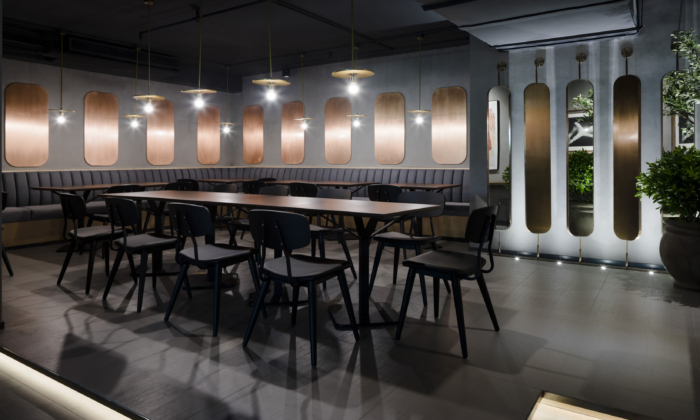
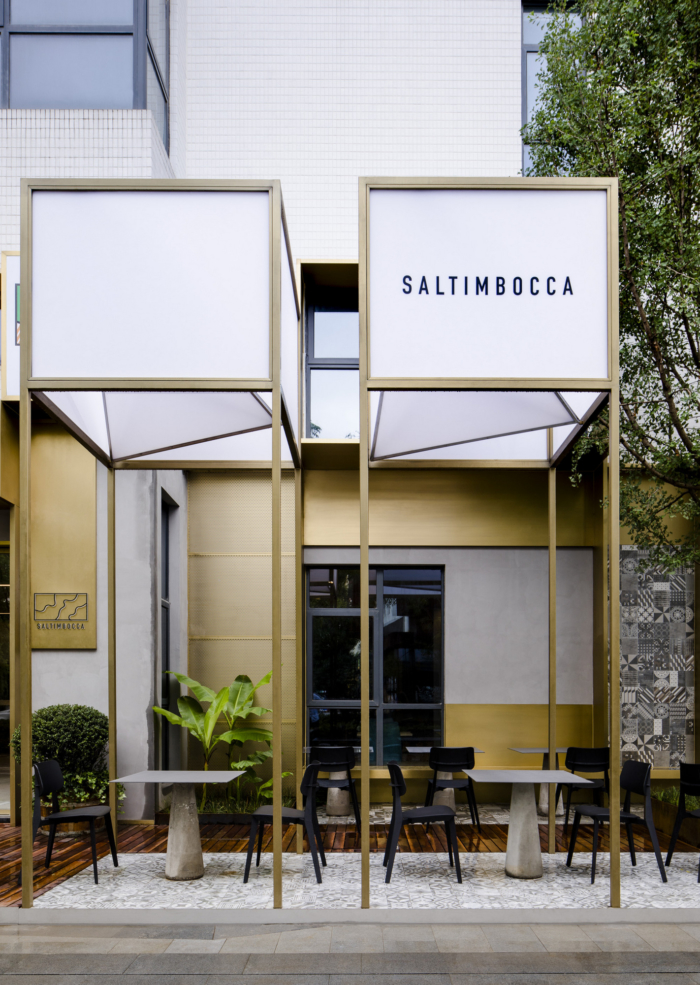

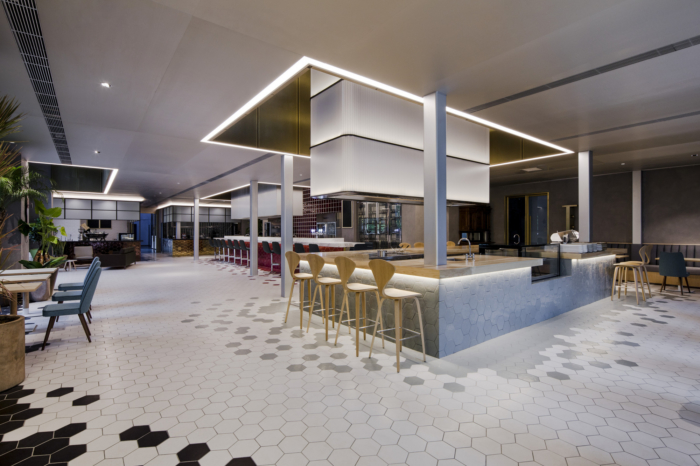
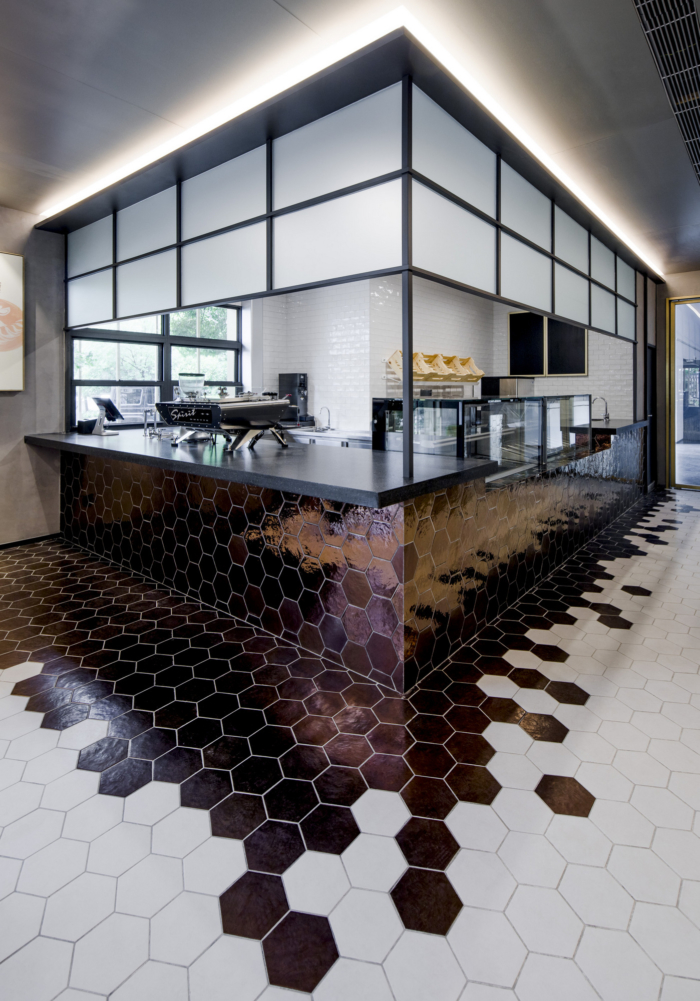
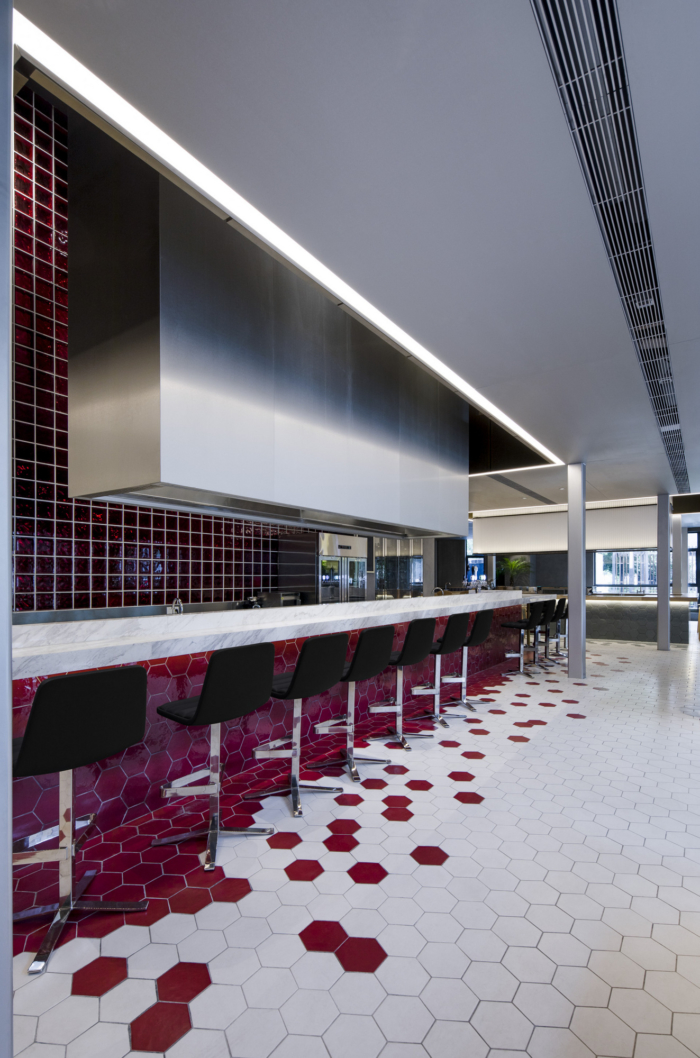
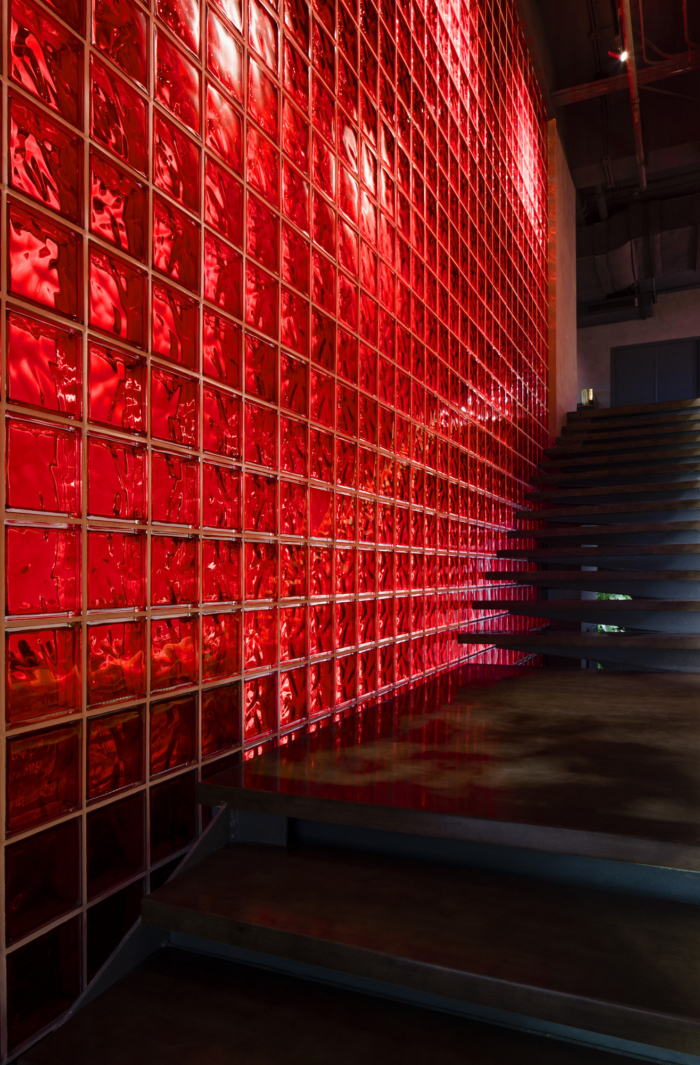
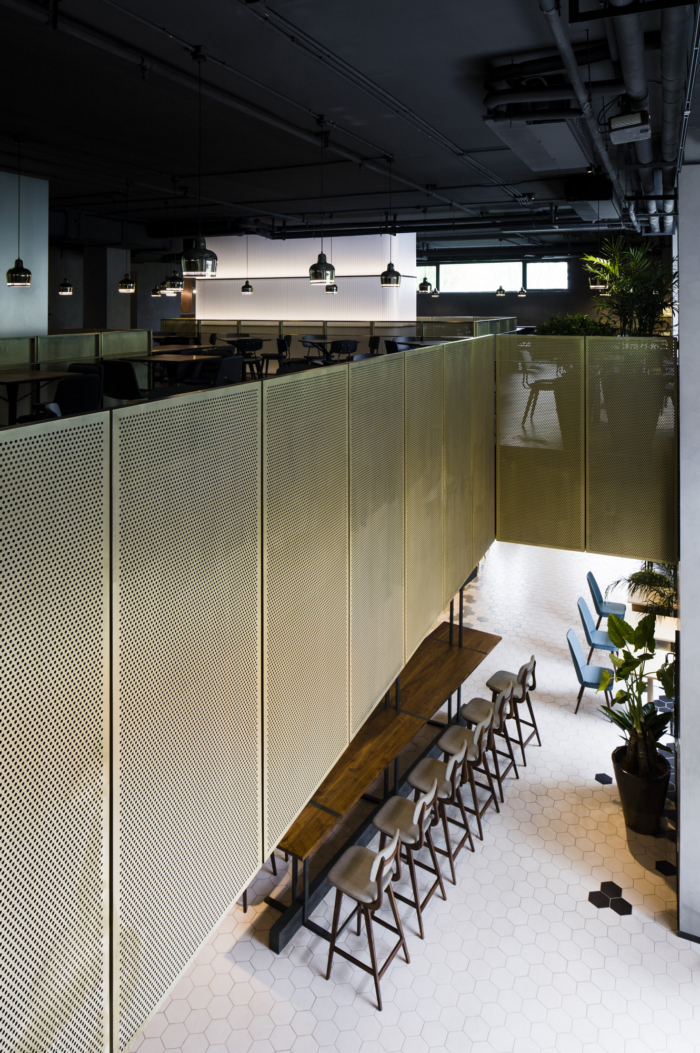
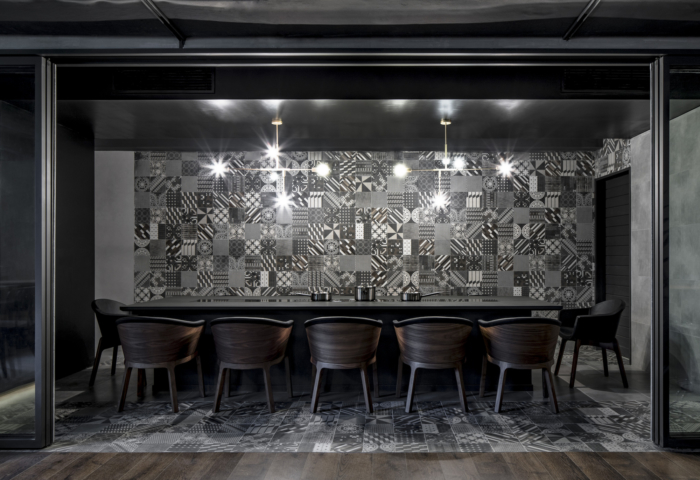
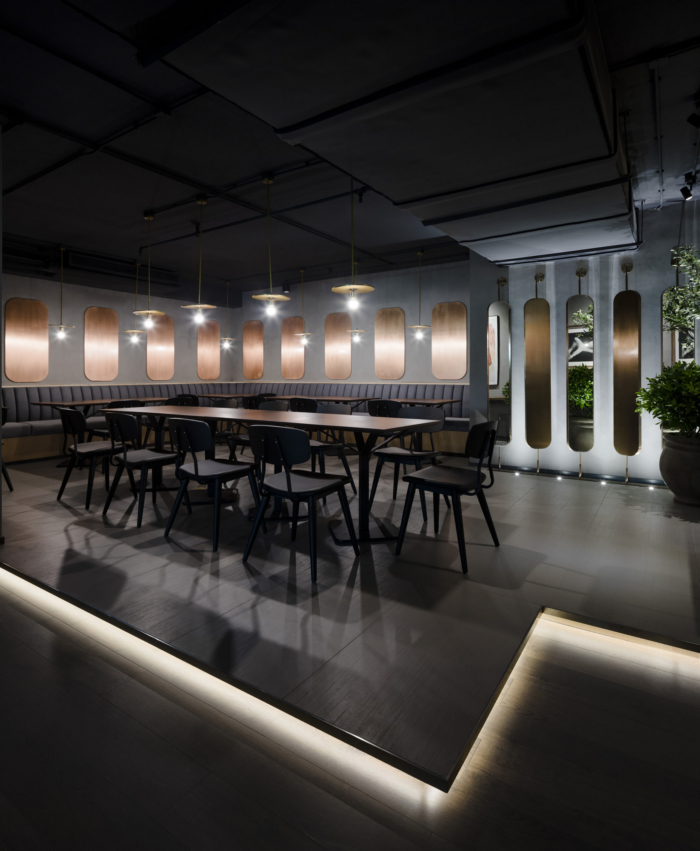
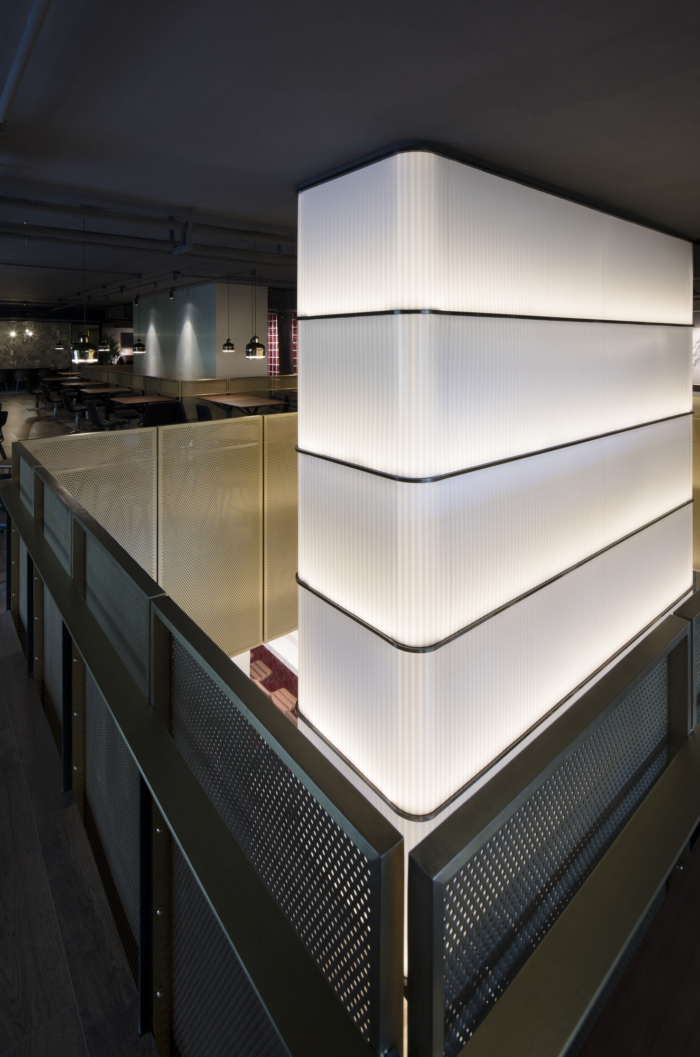
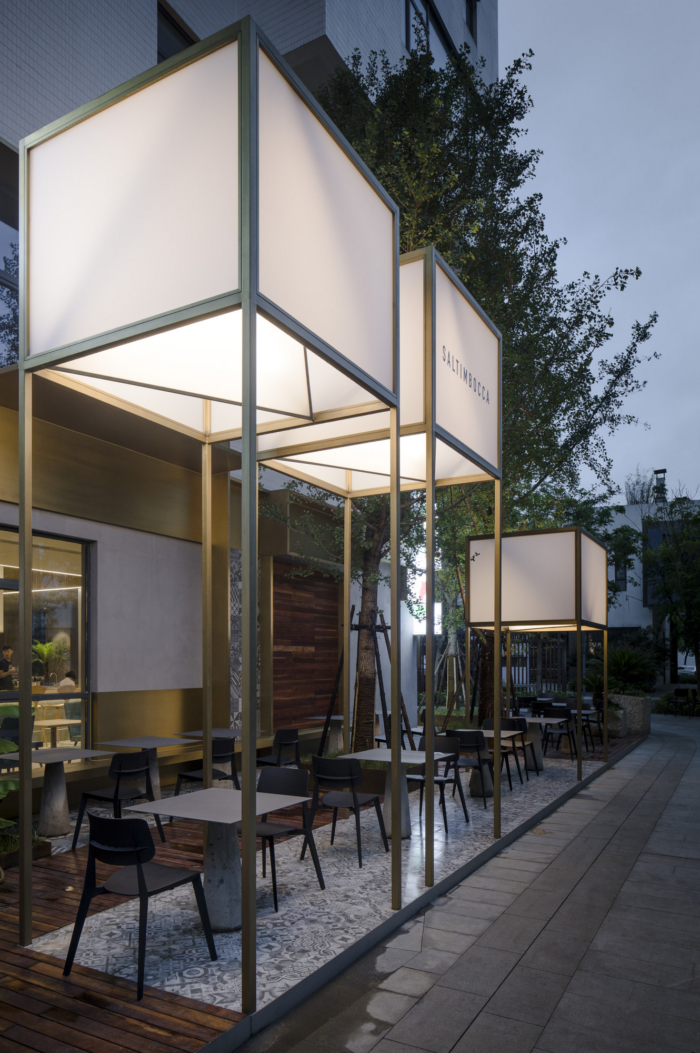
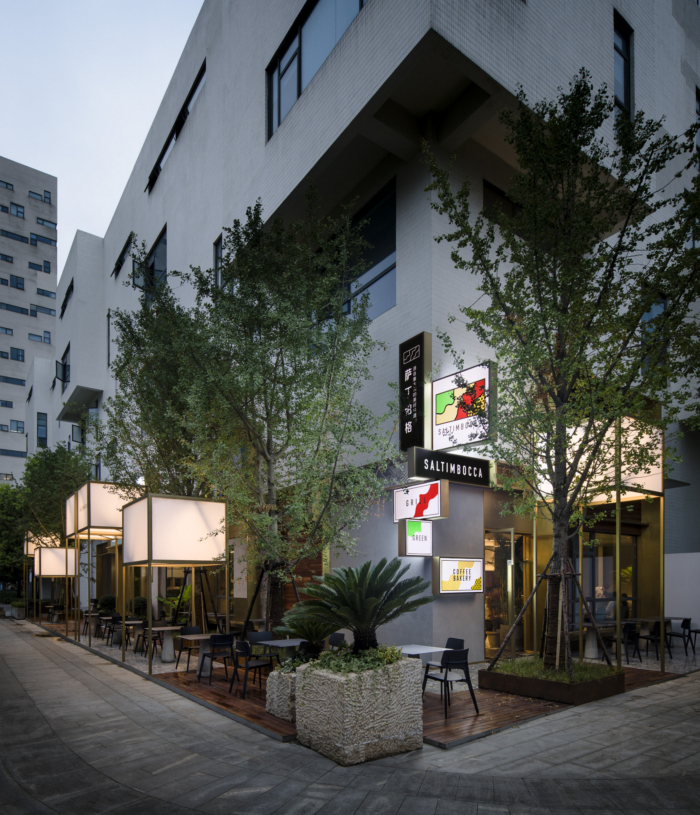
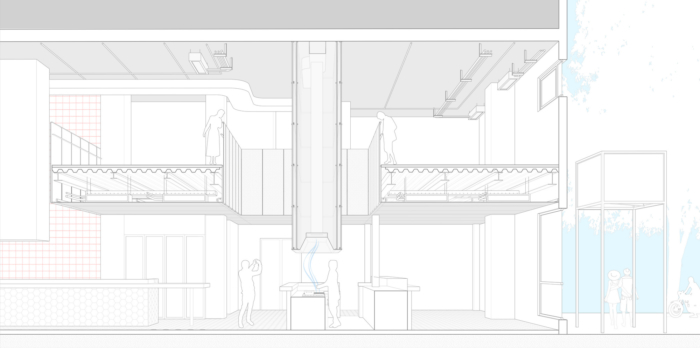
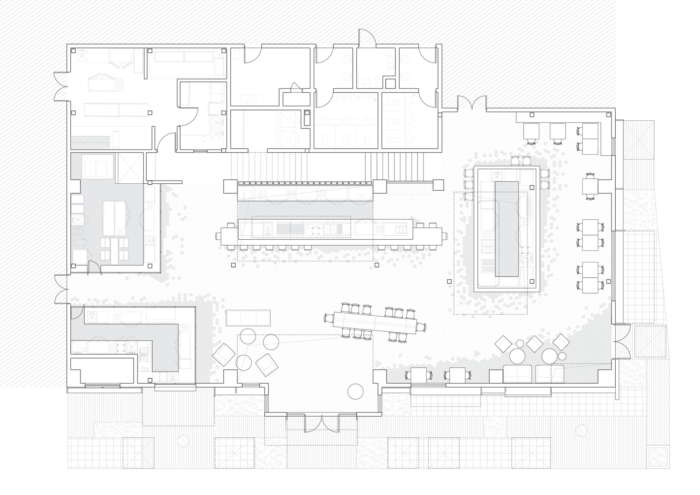
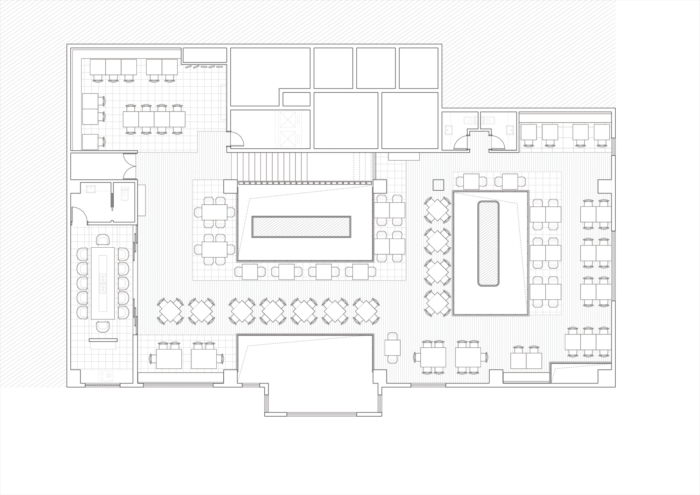






Now editing content for LinkedIn.